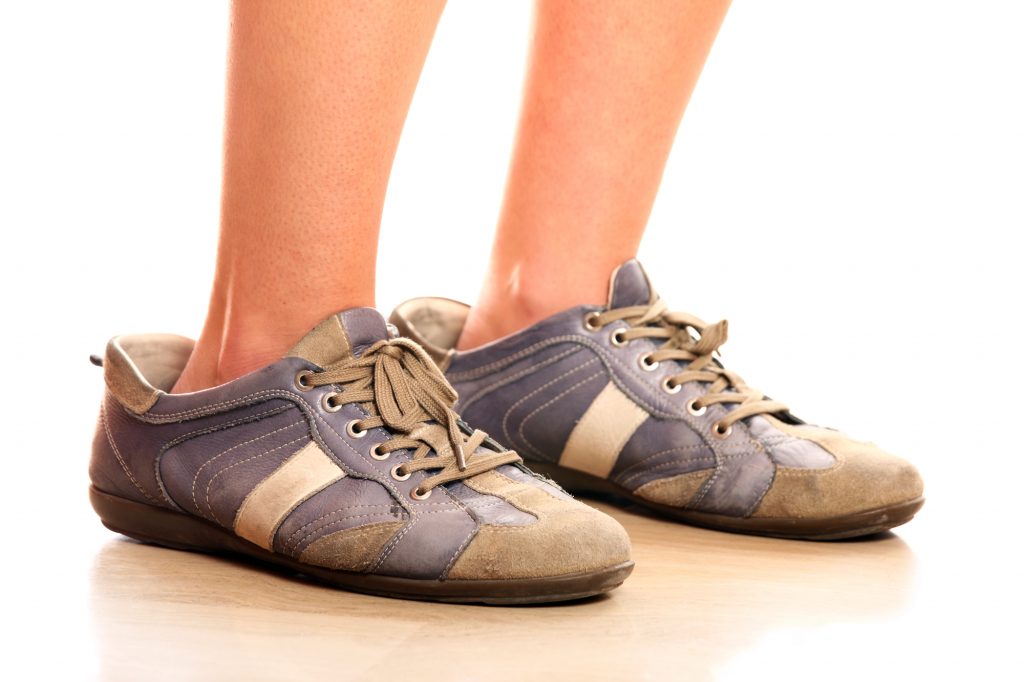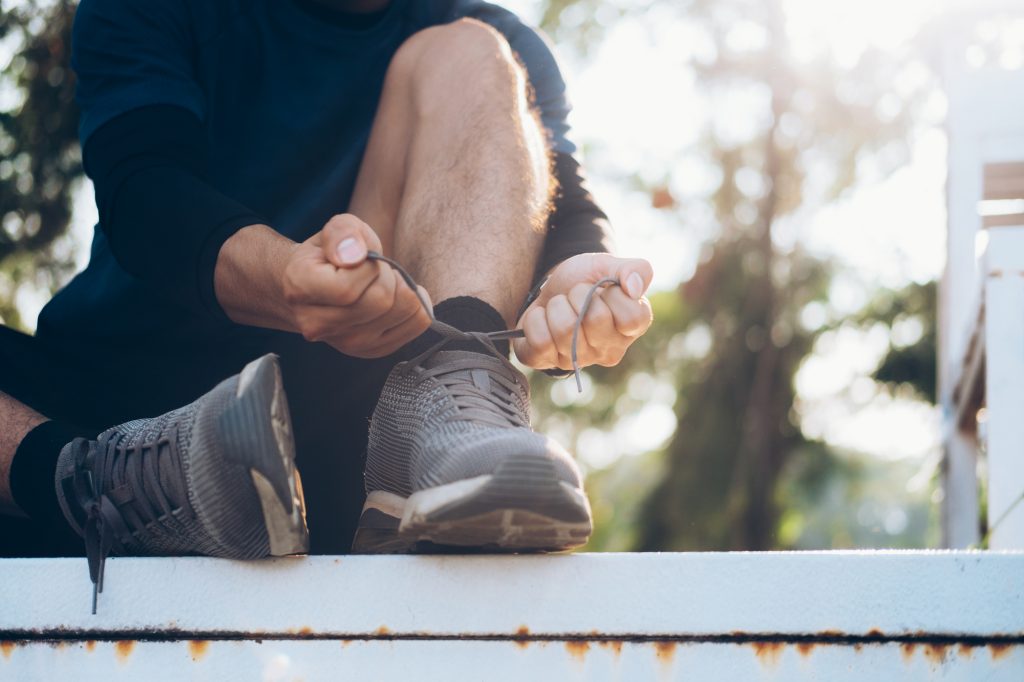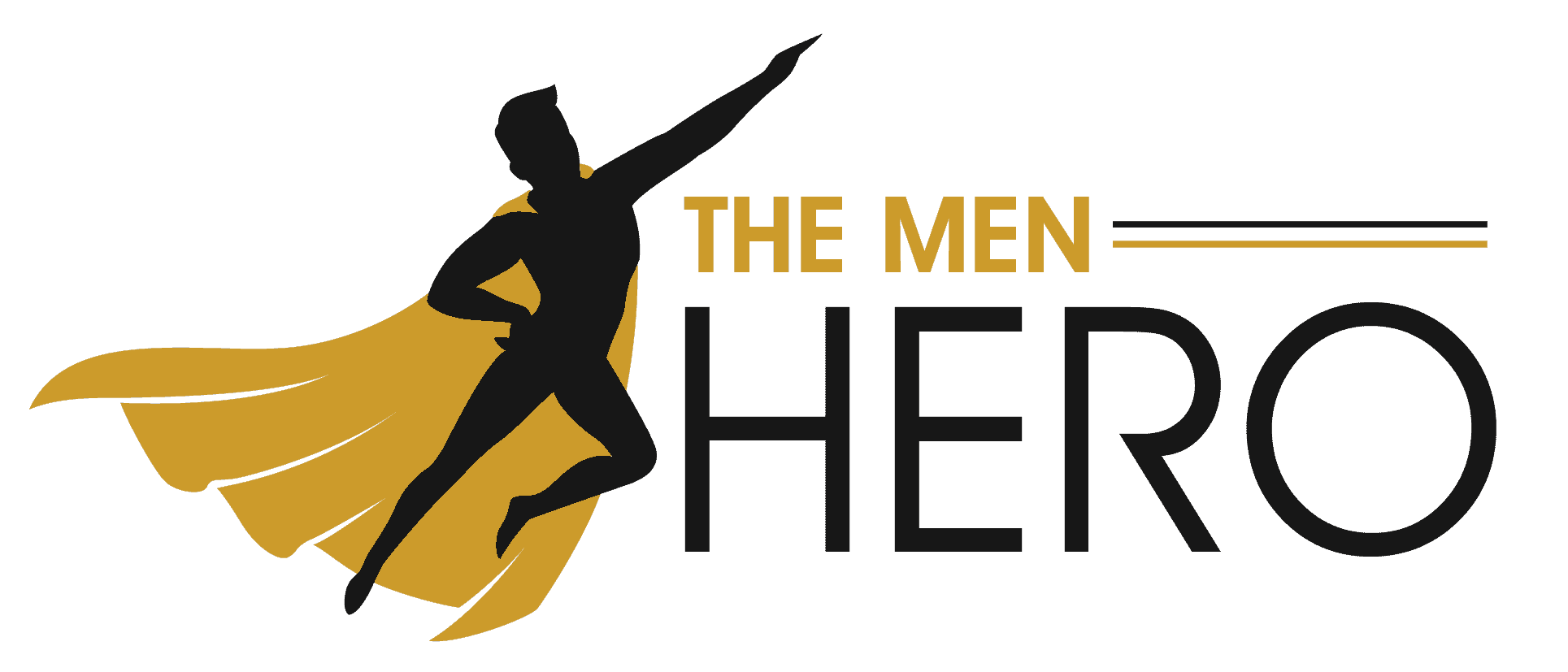This post may contain affiliate links. That means if you click and buy from that link, I may receive a small commission (at zero cost to you), which helps me maintain the quality of this blog. Please see my full disclosure policy for details.
How to tell if shoes are too big? Maybe you always buy the same shoe size, but did you know that different brands and styles can be different shoe sizes?
Did you ever realize that you have/had some shoes that made your foot slip inside when walking? Or you had a big gap between your biggest toe and the front of the shoe? Maybe you continually had blisters with that pair? All these are signs that your shoes are too big.
Fortunately for you, I worked in shoe retail for six years as a store manager and footwear manager. As a result, I have helped thousands of customers find the perfect shoe size and avoid purchasing bigger shoe sizes.
After reading this article, you will understand if you have been wearing the wrong size all your life, how to tell if your shoes are too big, and how to prevent buying the wrong size in the future when shopping for shoes, boots, or sandals.
Signs That Your Shoes Are Too Big

These are the most common signs that your shoes are too big.
Your Feet Slip When You Walk
When you walk, do your feet slip inside of the shoe? If this regularly occurs, be aware that your feet are slipping inside the shoe because it’s too big for you. The excess space allows your foot to slide out, causing pain and discomfort.
Read: Do Suede Shoes Stretch?
When this happens, you may not realize that your feet are slipping because you have become accustomed. If there is also a gap between your biggest toe and the front of the shoe when this happens, be careful because it can cause blisters underneath your toes.
If your heels always slip out of shoes, especially while walking, this is another sign that they are too big and maybe too wide. Some people have narrow feet, and some brands like Skechers have mostly wide sneakers.
The Shoes Rub On Your Heels
Another sign that your shoes are too big is when they rub on your heels creating blisters, bursitis, and other foot problems. This is because you have too much room in the heel, which causes your foot to slide around as you walk.
Read: How To Stop Shoes From Rubbing The Back Of Your Ankle?
Many people think it’s an issue with improper fit, but achy heels are often caused by rubbing and friction between the instep/ball of your foot and your shoes. This can also lead to other problems like plantar fasciitis and irritable fascia.
The best way to check is to slip a finger between the heel of your foot and the heel of your shoe. There should be a slight amount of space for your finger to fit snugly when you do this. If your finger slides in quickly, and you still have spare room inside of the sneaker, then the shoes are too big.
The Shoe Laces Are Overlapped
Quite often, the spare room in your shoes will create overlap between the shoelaces. The problem with overlapping shoelaces is that it makes them difficult to tie and untie, which can cause tripping and even breaking a shoelace.
Do you know where your shoes are so big that you try to tighten your laces as far as possible? That’s a bad idea because the support that shoes should give is not there, but you are also damaging the shoes and the laces. It also looks awful.
This is especially bad with dress shoes because it doesn’t look suitable for businessmen and women. If it’s a formal work environment, the excess shoelaces can make you look silly, messy, and unprepared.
Read: How To Make Shoes Smaller?
In addition to the loose laces that can make you trip, they also don’t lay flat against your shoes as standard shoelaces do. The worst part is that you may not even notice it’s happening because we have all become accustomed to seeing it.
You Have Too Much Space In The Front Of The Shoe
Another sign that your shoes are too big is when there’s extra room in the front portion of the shoe. Having some extra room is good when not excessive because your feet swell with the heat.
With all my customers I always checked if their shoes were too big or not. You press the shoe with a finger and check the space between your longest toe and the end of the shoe. If the room is about one finger’s width, the shoe fits correctly. If not is because it is too big.
How To Tell If Shoes Are Too Big?
These are the most common signs that your hiking boots and running shoes are too big.
How To Tell If Hiking Boots Are Too Big?
If you plan to go hiking, you want your boots to fit correctly because you need the support and comfort to walk for long hours.
Read: Do Adidas Shoes Run Big Or Small?
So here are the different ways that you can tell if your hiking boots are too big:
- You are getting blisters on your heel;
- Toe pain when going downhill;
- You lace your boots, but your feet still can shift forward and back or side to side;
- No ankle support when the laces are tight to the maximum.
How To Tell If Running Shoes Are Too Big?

If you are a runner and your running shoes are hurting you every time you run, there is a huge chance they are too big. When you run, you want to feel the support of your shoes and focus on what you want to achieve, not the problems the sneakers are giving to you.
Read: How Much Do Shoes Weigh?
So here are the different ways that you can tell if your running sneakers are too big:
- Your heel slips while you’re walking or running uphill;
- Numbness or pressure on the top of your foot;
- Your foot shifts around inside of your shoe;
- You feel no support when placing your shoe on the ground.
I personally like to have my running shoes half a size bigger because my feet swell a lot with the heat. Also, during winter, I like to wear thicker socks.
How To Avoid Buying Shoes Too Big?
There are a couple of measures you can put into action to avoid purchasing shoes too big.
Have Your Feet Measured
If you never had your feet measured, that needs to change. If you are in a shoe store, just ask if they can measure your feet. This will avoid any wrong size purchases. They measure your feet on Asics (we even did x-rays to the customer’s feet to ensure we were selling the perfect size); on Skechers, we had to use a Brannock device where you press the toes flat against the base of the device, and we look down over to the longest toe.
Read: Slides vs Flip Flops
Different stores have different ways to check your feet size.
Fit The Shoes On Both Feet
I had some customers that bought shoes without even trying them (it didn’t happen very often, but it happened). Some people only tried one shoe because “they knew” the right or left foot was their bigger foot.
It doesn’t matter what you know, always try both shoes when buying a new pair. The right shoe can fit perfectly, but the left one can have a manufacturing problem that you will only know when you try. This happened a couple of times when a customer came back to the store because one of the shoes had a bump that made the shoe uncomfortable, and they only tried the other shoe.
Also, every brand and style is different, so it’s always better to try both pairs.
Take Your Insole And Socks With You
When buying a new pair of shoes, always have what you need with you. For example, don’t buy a bigger size because you think you need the extra space for the insole you have at home and need to put inside the shoe. Instead, get the insole with you and try it when you are buying the shoes. You will only know if the size will be good this way.
Read: Check Out My Review Of Amberjack Shoes
The same happens if you want to wear thicker socks. If your feet are swollen every time you walk, I would try to buy a pair of shoes when they are swollen, because this way you will know the right size and not guess what size fits the best.
Common Questions About How To Tell If Shoes Are Too Big?
These are the most common questions about how to tell if shoes are too big.
How Much Room Should Be At The End Of A Shoe?
At the end of a shoe (toe box), you should have a finger’s width between your biggest toe and the end of the shoe.
Should Your Toes Touch The End Of Your Shoes?
No, your toes should never touch the end of your shoes, at least in a systematic way, because when walking, you will put pressure on that area of the shoe that will end up ripped. This often happened to all my mesh and fabric shoes.
Is It OK To Wear Slightly Bigger Shoes?
It is OK to wear a slightly bigger shoe if it is half a size bigger. However, if you feel your feet keep moving forward inside the shoes, have blisters on the heel, and don’t feel any support when walking or running, you need a smaller size.
Is It Better To Wear Shoes Of A Bigger Size Or Your Actual Size?
It’s always better to wear shoes that are your actual size. However, if you need to insert an orthopedic insole, wear thick socks, or have a medical condition that makes your feet swollen, it’s better if you wear a bigger size of shoes.
How To Know If A Shoe Is Too Big?
You may be able to get away with wearing a size too big, but it’s not the best option. First, your feet will slip when you walk and rub on your heels, causing pain while walking or even just standing in them for too long.
Second, the shoelaces are overlapped because they don’t fit snugly enough around your foot, which leaves room at the front of the shoe that can cause blisters and painful rubbing against your skin there as well.
Finally, if you have more than a finger width or a lot of space at the back heel area, then these shoes are too big! It is better to go down another size rather than risk any discomfort from ill-fitting footwear.
Now that you have learned how to tell if shoes are too big, you need to go for a walk and check if any of the above situations happen. If they do, that means you need a smaller size.
I would also read these articles:
